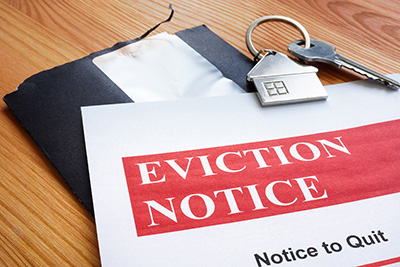Zeitgeist - Sign of the Times
Working from Home, Forever?
Covid has upended the office market like Amazon destroyed the big box retailer and the belt killed off suspenders. The average vacancy of the top 50 U.S. office markets was almost 16% in January. Much of the “occupied” 84% is also vacant but leased to tenants that are locked into pre-Covid leases. According to the VTS Office Demand Index, new demand for office space is just 58% of its pre-pandemic level. Much of the change is attributable to a more permanent “work-from-anywhere-but-the-office” shift in mindset. And as companies look to renew long-term office leases that were inked pre-Covid, many are downsizing and adopting a hybrid-work model that requires less (or no) office space.
 On the flipside, workers still need a place to work, and the temporary home offices of March 2020 have evolved into long-term solutions. According to a recent Pew Research poll, nearly 60% of U.S. workers who say their jobs can be done from home are working from home “all or most of the time” and 61% of these workers are doing so by choice versus necessity. 64% of these workers say it’s easier to balance work and personal life while working from home and 60% say they would like to work from home “all or most of the time” once the pandemic is over. In short, most people who can work from home are working from home and they want to keep it that way. We’ll see how things shake out once the pandemic is over (like “no new scary variants” over), but for the time being, the outlook for the office market appears to be bleak and the trajectory for the home office is Zooming.
On the flipside, workers still need a place to work, and the temporary home offices of March 2020 have evolved into long-term solutions. According to a recent Pew Research poll, nearly 60% of U.S. workers who say their jobs can be done from home are working from home “all or most of the time” and 61% of these workers are doing so by choice versus necessity. 64% of these workers say it’s easier to balance work and personal life while working from home and 60% say they would like to work from home “all or most of the time” once the pandemic is over. In short, most people who can work from home are working from home and they want to keep it that way. We’ll see how things shake out once the pandemic is over (like “no new scary variants” over), but for the time being, the outlook for the office market appears to be bleak and the trajectory for the home office is Zooming.
(Editor’s Note: We recognized the importance of improving our residents’ work from home experience early in the pandemic including improving community Wi-Fi and increasing the availability of package lockers and frequency of trash pick-ups to meet higher demand.)
Eviction Moratoriums – What’s the Latest?
Last August, the U.S. Supreme Court ruled 6-3 to strike down the Federal eviction moratorium, which had prevented landlords from evicting tenants unable to pay rent due to Covid-related financial hardships. Despite the court ruling, many state and local governments created or extended their own eviction moratoriums.
In two markets where Pathfinder operates, Oregon and California, prohibitions on evictions of tenants who can prove they have applied for emergency rental assistance were extended. In these states, evictions are prohibited for all tenants who can prove they have applied for assistance, regardless of the status of their application. Oregon extended this protection statewide until July 1 and California until April 1.
 Colorado did not extend an eviction moratorium beyond the federal expiration date but did offer delinquent tenants an additional 30 days to receive emergency rental assistance or find new housing. Colorado landlords may proceed with evictions on tenants with pending rental assistance applications. The state also introduced new, more permanent laws extending the date late fees can be charged and dictating the frequency of rental rate increases.
Colorado did not extend an eviction moratorium beyond the federal expiration date but did offer delinquent tenants an additional 30 days to receive emergency rental assistance or find new housing. Colorado landlords may proceed with evictions on tenants with pending rental assistance applications. The state also introduced new, more permanent laws extending the date late fees can be charged and dictating the frequency of rental rate increases.
Washington continues to offer eviction protections to tenants who have applied for rental relief and requires landlords to obtain a dispute resolution certificate – a process that can take several months – before moving forward with an eviction.
Although the Federal eviction moratorium expired more than four months ago, state and local extensions continue to delay (and complicate) the eviction of tenants who are not paying rent as a result of non-Covid-related hardship. We expect the most stringent regulations to be lifted this year but, like Colorado, some states may keep certain protections longer.
Share this Article
IN THIS ISSUE
PATHFINDER PARTNERS INCOME FUND, L.P.
A Stablized Multifamily Fund
CHARTING THE COURSE
Clean-Up on Aisle Five! Will the Fed Cause a Recession to Curb Inflation?
FINDING YOUR PATH
The Tipping Point in Home Prices?
GUEST FEATURE
The 2021 Apartment Market and What’s Ahead in 2022
ZEITGEIST
Sign of the Times
TRAILBLAZING
Chestnut Ridge, Denver, CO
NOTABLES AND QUOTABLES
Creativity
